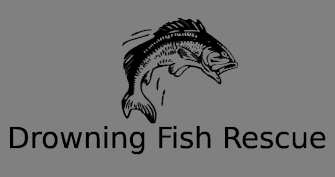In the Upper Midwest, May is prime time for catching bluegill in shallow rivers, as these feisty panfish move into warmer waters to feed and prepare for spawning. With their aggressive bites and abundance, bluegill offer anglers of all skill levels a rewarding experience. This guide outlines the best techniques for catching bluegill in shallow Upper Midwest rivers during May, covering tackle, bait, locations, and expert tips to optimize your success.
Why May is Ideal for Bluegill Fishing
In May, water temperatures in Upper Midwest rivers like the Mississippi, Wisconsin, and St. Croix rise to 60–70°F, triggering bluegill to move from deeper pools to shallow areas (1–4 feet) for feeding and spawning. These fish are highly active, aggressively striking small baits and lures, making them perfect targets for light tackle anglers. The Upper Midwest’s mix of slow-moving rivers and abundant cover, such as fallen logs and weed beds, creates ideal bluegill habitats.

Bluegill thrive in shallow, weedy river sections in May.
Best Tackle Setup for Bluegill
Using the right tackle ensures you can detect subtle bites and handle bluegill effectively without overpowering them. Here’s the optimal setup:
- Rod and Reel: A 5–6-foot ultralight spinning rod with a fast action tip paired with a 1000-series reel is ideal. Brands like St. Croix offer excellent ultralight options.
- Line: Use 2–4-pound monofilament or fluorocarbon for sensitivity and low visibility. Alternatively, 6-pound braid with a 4-pound fluorocarbon leader works for weedy areas.
- Terminal Tackle: Opt for a small bobber (1/4-inch) to suspend bait 6–18 inches above the bottom. Use #6–#8 long-shank hooks for easy hook removal and split shot weights to adjust depth.
- Lures: Small jigs (1/32–1/16 ounce) tipped with plastics or live bait, or micro spinnerbaits like the Johnson Beetle Spin, are deadly for active bluegill.
Top Baits for Bluegill
Bluegill are opportunistic feeders, and live bait often outperforms artificials in shallow rivers. Effective options include:
- Worms: Red worms or nightcrawlers, pinched into small pieces, are irresistible. Thread a small piece onto the hook to cover the point.
- Crickets and Grasshoppers: These insects mimic natural prey and are highly effective in May. Hook them lightly through the thorax.
- Wax Worms: Ideal for finicky fish, wax worms are small and soft, perfect for #8 hooks.
- Artificials: Soft plastics like 1-inch Gulp! Minnows or curly-tail grubs in natural colors (e.g., smoke or pumpkinseed) work well under a bobber or on a jighead.

A bobber rig with a worm is a classic bluegill setup.
Best Techniques for Catching Bluegill
The key to catching bluegill in shallow rivers is presenting bait naturally in high-traffic areas. Follow these steps:
- Locate Structure: Target areas with cover like submerged logs, weed edges, or undercut banks. Bluegill congregate near these spots for protection and food.
- Use a Bobber Rig: Set the bobber so the bait hangs just above the bottom or weed tops. Cast near cover and let the bait settle, watching for subtle bobber twitches.
- Retrieve Lures Slowly: For jigs or spinners, cast and retrieve with a slow, steady motion, adding occasional pauses to mimic injured prey. A stop-and-go retrieve can trigger strikes.
- Stay Mobile: If bites are slow, move along the riverbank, casting to different structures every 5–10 minutes to find active fish.
Prime Upper Midwest Rivers for Bluegill
The Upper Midwest offers numerous shallow rivers teeming with bluegill in May. Top locations include:
- Wisconsin River (Wisconsin): Known for its slow-moving sections and abundant weed beds, this river is a bluegill hotspot near Sauk City and Spring Green.
- Mississippi River (Minnesota/Iowa): Backwaters and sloughs around La Crosse, WI, and Red Wing, MN, provide shallow, sheltered areas for bluegill.
- St. Croix River (Minnesota/Wisconsin): The stretch near Stillwater, MN, offers clear water and rocky banks where bluegill thrive.
- Rock River (Illinois): Shallow flats near Rockford are ideal for wading or bank fishing for bluegill.
Expert Tips for Success
Maximize your bluegill catch with these proven tips:
- Fish Early or Late: Bluegill are most active at dawn and dusk when they feed aggressively in shallow water.
- Match the Hatch: Observe local insects or baitfish and choose baits that mimic their size and color.
- Use Light Hooks: Long-shank hooks prevent bluegill from swallowing bait, making catch-and-release easier.
- Check Water Clarity: In murky water, use brighter baits like chartreuse; in clear water, stick to natural tones.
- Wade Carefully: When wading, move slowly to avoid spooking fish in shallow areas.
Conservation and Etiquette
Bluegill are abundant, but responsible fishing ensures healthy populations. Keep only what you need for a meal (check local regulations for bag limits) and release smaller fish to sustain spawning stocks. Use barbless hooks or pinch barbs for easier release. Respect other anglers by maintaining distance and leaving no trash behind.
Conclusion
Catching bluegill in shallow Upper Midwest rivers in May is an accessible and exciting pursuit, perfect for beginners and seasoned anglers alike. By using ultralight tackle, live bait like worms or crickets, and targeting structure-rich areas in rivers like the Wisconsin or Mississippi, you can enjoy consistent action. Follow the techniques and tips outlined here, fish responsibly, and explore the Upper Midwest’s scenic rivers for a memorable bluegill fishing experience. For more fishing gear recommendations, visit Bass Pro Shops or check local regulations at Minnesota DNR.
